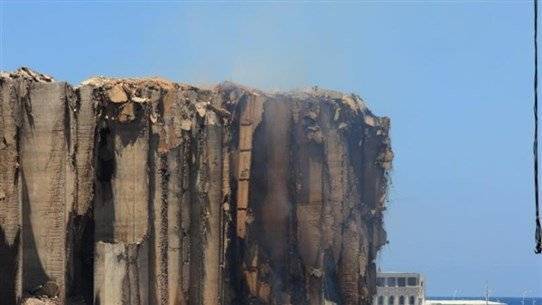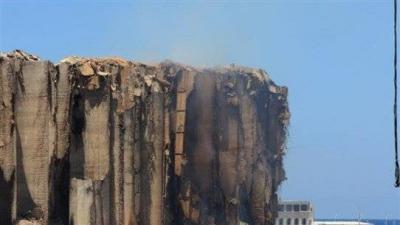Some people find it hard to believe that grains such as wheat and corn can explode and cause fires. How can this happen when they are considered food items that pose no more danger than causing weight gain or some illnesses? However, if we look a little deeper, we would find that grains are used as raw materials to produce biofuel, which is consumed in some countries as fuel for cars. Over the course of thirty years, more than 500 explosions have occurred in grain silos, resulting in the deaths of 184 people and injuring over 600, according to the U.S. Department of Labor. Thus, these grains are not as innocent as some may believe; they are a source of threat that has cost the lives of several storage workers around the world, and the threat increases as there are no laws regulating the packaging methods and duration.
Silos and grain storage facilities are dangerous places where unintended chemical reactions occur, transforming food into something akin to explosives. Consequently, legislators have taken action and established laws regulating the storage duration and methods of handling grains. These regulations require silo operators to implement measures, including maintaining constant ventilation, monitoring humidity levels, and installing temperature measuring devices at specific points inside them. The hazardous chemical transformations stem primarily from the components found in grains belonging to the carbohydrate family (carbon compounds).
Returning to Lebanon, specifically to the wheat silos affected by the explosion of Unit 12 on August 4, 2020. Flames have been emerging from them for over a month, almost daily, without the ability to extinguish them completely. The fires are a result of chemical changes that took place in tons of grains left unattended for nearly two years under natural conditions that make them similar to "charcoal production pits" in villages. To understand what is happening, we will use the previous analogy in our explanation. The process of charcoal production involves stacking tree trunks and branches, which contain complex carbon compounds, into piles. The charcoal producer buries the woodpile using clay, leaving two or three openings to allow a limited amount of oxygen-saturated air to enter. They ignite the fire and check daily on the openings to ensure they do not expand, as too much air can cause the wood to burn completely. The goal is to achieve a chemical process known as "carbonization," which relies on the thermal decomposition (pyrolysis) of carbon compounds without reaching complete combustion. This process has been used for thousands of years to produce mold-resistant charcoal, unlike wood, which can be stored for years and used easily for heating and igniting fires.
The remaining wheat and grains inside the silos have reached a stage very similar to "charcoal production pits." The natural shape of the grains does not allow air to enter the heart of the piles easily, and the mold formation on the surface of the grain piles further traps air and hinders ventilation at various points inside. Consequently, the carbonization process begins there, with temperatures rising naturally, exacerbated by the lack of proper ventilation until certain points reach up to 700 degrees Celsius, igniting fires spontaneously without external intervention. Flames will start consuming the dry grains around them and intensify without extinguishing naturally.
Using water to extinguish fires in silos, without removing the grain piles, will initially extinguish the flames. However, it prepares for a more intense second round of fires due to the water seeping into the heart of the piles, which accelerates a more dangerous and faster chemical process known as fermentation. This reaction produces combustible natural gas faster than charcoal.
Even completely cutting off air to the grain piles using dirt will not effectively extinguish the fires at the port. While this method will stop the carbonization process, it will, in turn, trigger more dangerous processes, namely the "anaerobic fermentation" of grains that produces the natural gas known as "methane." Thus, we will face the formation of gas pockets within the grains that explode whenever the pressure inside them rises to a certain point and ignite repeatedly. The greater risk with this method lies in increasing the likelihood of structural collapse of the already damaged constructions from the initial explosion.
Scientifically, we are left with only one solution: to dispose of all the grains using feasible engineering methods, either by extracting them or demolishing the silos above them and then clearing the rubble. The decision lies with the engineers who will assess what is available and possible.




